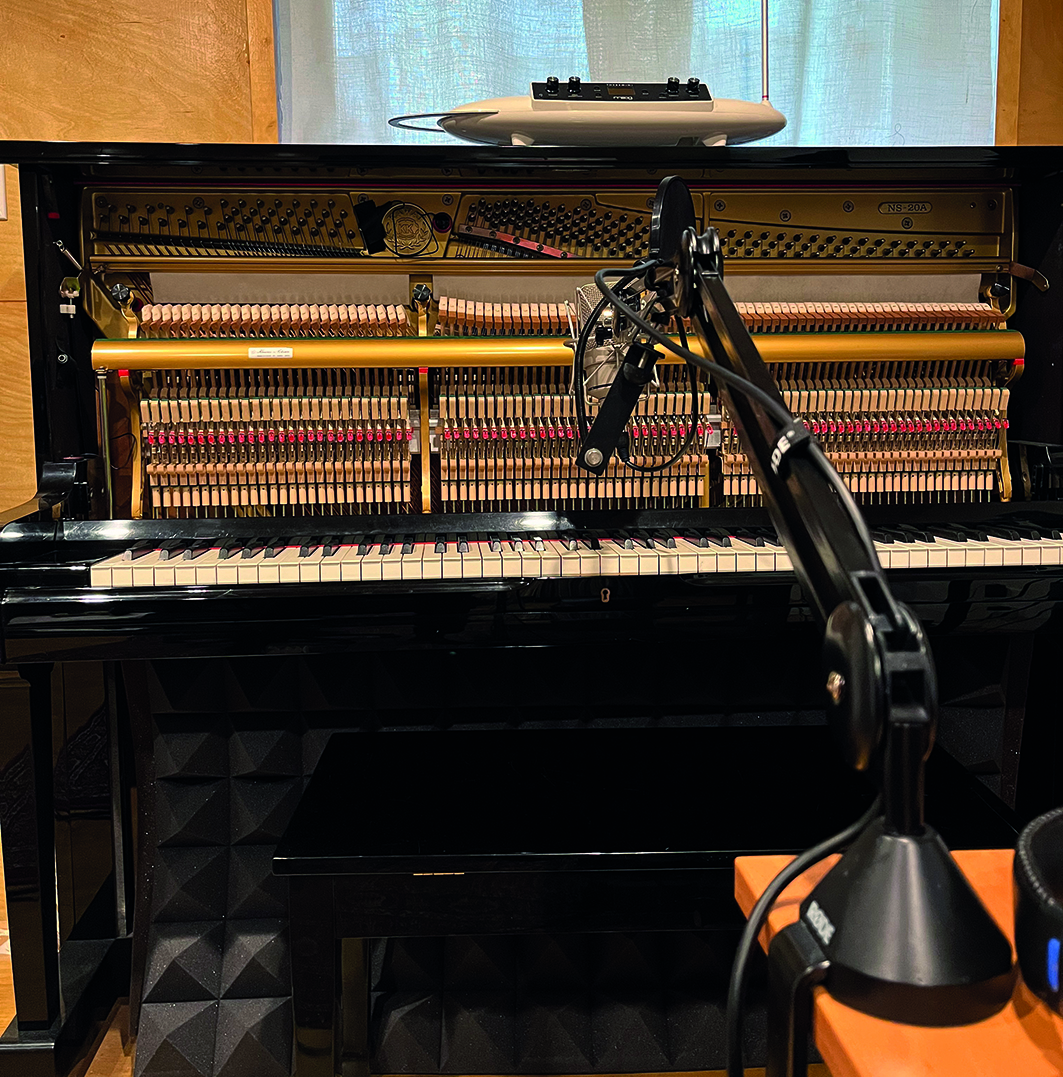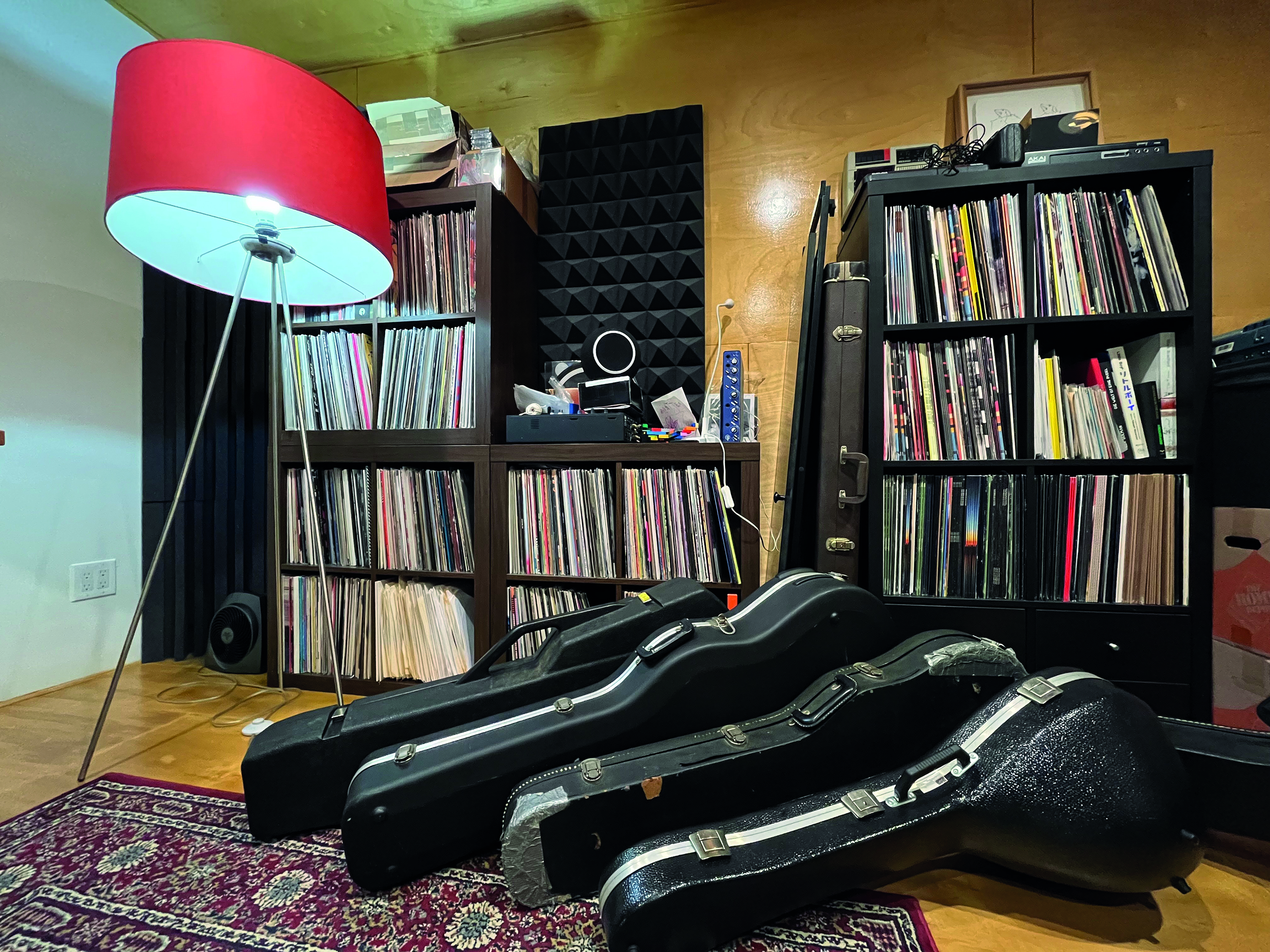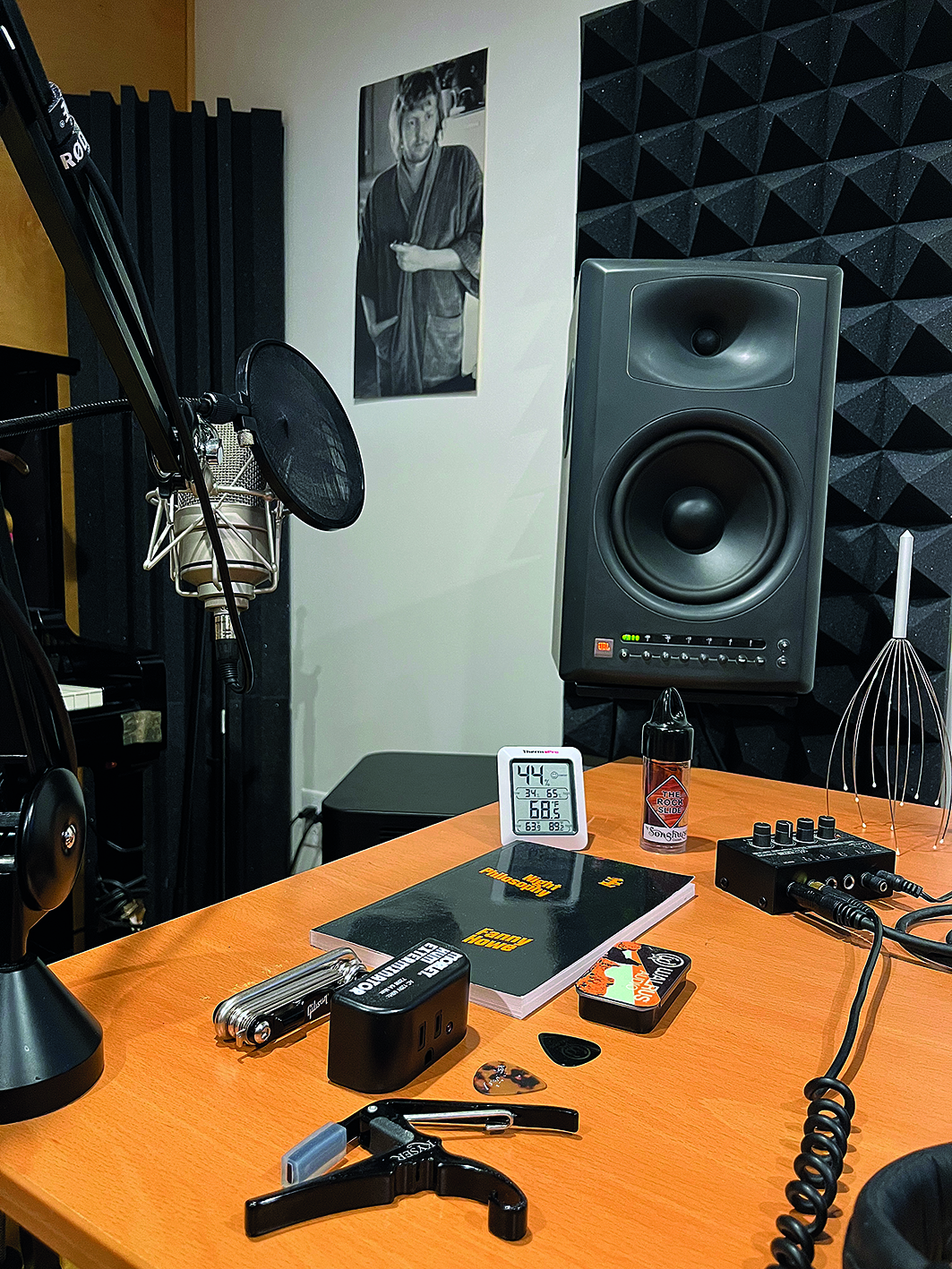FaltyDL: "If you get a good solid decade in this industry that’s incredible - but after that you have to build your own playground to play in"
Shapeshifting producer FaltyDL takes a leap into vocal-based indie-rock. Danny Turner discusses the step change

Since the release of his debut album Love Is A Liability (2009), the career of FaltyDL’s Drew Lustman has been a journey of oblique experimentation. Yet by 2017 he’d begun to tire of the circular pattern of making dance music and gigging, sensing stagnation that year following the release of his introspective LP Heaven Is For Quitters.
Awaiting inspiration, it was only when he embarked on songwriting sessions with American rapper Mykki Blanco that he finally felt a corner had been turned. Inspired by Blanco’s ability to create characters and freestyle vocally, the instrumentalist picked up a microphone for the first time and returned to playing instruments.
On his latest FaltyDL album, A Nurse To My Patience, Lustman’s diversion into vocal-based indie-rock is fully realised. Bold and ambitious, not only is it a sonic revelation, but his vocals stand bravely alongside Interpol’s Paul Banks, Hot Chip’s Joe Goddard and avant-garde composer Julianna Barwick.
You did a two-way interview with Squarepusher a few years back. Did anything he said influence you in terms of how you think about music?
“That was right around the time that I opened for Squarepusher in New York and I was lucky to get the opportunity to chat to him for a while. I’d gone so deep into his music that I felt I had a personal connection with him, but what I took away from that conversation was that he’s only interested in the use of an effect once he starts dealing with the chaos of real feedback or what happens when you push something to the limit of how you’re supposed to. He also truly believes that what he’s doing is important. Not self-important, but he feels like a scientist going to work,
and I also have those moments when I’m fully into my process.”
In 2017 you were on the verge of quitting music. Looking back, what headspace were you in?
“Every time I read back on things I’ve said it’s like, argh, was this really where I was at that point? But I can’t deny that it’s true. I was doing fewer gigs and was no longer on Ninja Tune so didn’t have the support that I’d once had and needed to start looking at things more realistically. I don’t know that I’ll ever quit making music, but to put an album out every two years, work with other people and support it takes up most of my time, so when I felt like I didn’t have that support coming back to me I thought maybe I should do something else to help pay the bills.
Want all the hottest music and gear news, reviews, deals, features and more, direct to your inbox? Sign up here.
That’s the ebb and flow of an artist – there’s moments where it’s flush and others where it’s pretty bare
“But that’s the ebb and flow of an artist – there’s moments where it’s flush and others where it’s pretty bare. I guess this new album is about stepping outside of my electronic music comfort zone and trying to challenge myself. I’m basically trying to enter the indie realm and it feels like starting afresh again.”
Prior to Covid you released the Three Rooms EP and a couple of acid house EPs. As good as they were did you feel you were losing direction?
“When I was making all those acid tracks I was listening to Tin Man and a couple of other artists bubbling up with their own take on the acid house scene. Sometimes I do silly things, for example, there are tracks on those acid house EPs that don’t even have a bassline. I basically forgot to add an element that’s really important to the track, but that can be fun too. Maybe because I didn’t go clubbing much I was coming at it from a non-functional club aesthetic – the EPs came from years of listening to stuff on my own with headphones.”
Your new album, A Nurse To My Patience, is a real detour. How did that take shape?
“When the pandemic shut everything down I wanted to go visit my folks because I hadn’t seen my dad for a long time. I drove over there and hung outside, but he said while you’re here why not come round back and grab some of your instruments from the basement? That was an excellent idea because my current studio is three times the size of my old one.
“I grabbed three bass guitars, one electric, my bass rig, two acoustic guitars and my flute and suddenly had all these new things to re-familiarise myself with. I played and played, got really comfortable on guitar again and got my calluses back. That experience informed the palette change, but I was also listening to all sorts of stuff like King Crimson and Interpol’s new supergroup, Muzz.”
Did you always want to make an album that had a more rock-oriented feel?
“Yes, but then there’s also tunes on there like Zoo Jarre that have a lot of instrumentation yet still sound very produced and a little bit electronic. Another big thing that informed the album was the work I was doing with Mykki Blanco and how we literally invited other voices and ideas into the room.
“We were making music that adhered to some kind of pop structure but suddenly I was working with all these incredible folks like Michael Stipe, ANOHNI, Devendra Banhart and Kelsey Lu. I just thought, I can’t do this and then go back and make another electronic album – I wanna sing, play instruments and make my mark in this space too.”
Did you get to work with Michael Stipe in person?
“That was an early pandemic one so there was a lot of
remote work going on, but he was so helpful. The bigger an artist gets the more helpful they become and Michael was so available on email sending ideas and other gems of wisdom back and forth. When a vocal lands in from someone like
that, you wonder if you can ask them to try something different, but he was always willing to go back in and do another take.”
Presumably, artists like Michael got where they are today by being fully invested in everything they do?
“Absolutely, and then you also realise that you’re part of their career in that sense, which is almost overwhelming. I had a similar experience with Paul Banks of Interpol. That was an early pandemic reach-out via management and about two weeks later Paul’s vocals landed in my inbox with an email saying, ‘I really loved your music’. Following that, we went back and forth across 30 emails tweaking things to get the track to the right place.”

The last time we spoke you said that you found it hard to relate to lyrical music because it’s too literal, yet here you are singing on your own album for the first time?
“I love that you brought that up because boy am I glad that we’re allowed to change, grow and evolve. It’s amazing that I remember feeling that way, but I justified it by saying I needed to have some poetry in my music. Being a producer first and foremost, at first the process was about how I could produce my voice to sound good. That meant focusing on my sitting position, the placement of my tongue in my mouth, the microphone and how I technically deal with all of that.
“With the poetry, I realised I could tap into this thing where I could flow freely and be very connected to something without forcing it and have the confidence to write down whatever I was feeling without having any judgment over it.”
Was it all plain sailing?
“There are tracks I made during that period that I won’t release because they make me cringe [laughs], but it was exciting because I was working with microphones a lot more and that’s been the most interesting thing that I’ve done in music for years. When the direct interface is a microphone, this whole new world opens up regarding how to process that and it’s way different to working in the box and staring at my DAW.”
Was it also liberating to allow the instrumental side of your music to take a slight back seat?
“I really wanted the single to lead with a guitar-focused track that I was doing the lead vocal on. If I’d led with a track like Zoo Jarre, you might be able to draw more of a connection to my older music via the sensibility of its electronic palette, but I wanted to put this new side forward and not hide behind anything. I’m relieved now that I’ve done that and excited that it went okay.”

Not only are you singing on the album, but you’re also inviting comparison by pitting yourself alongside Paul Banks and Joe Goddard. That must require confidence…
“When I make music I always say to myself that I’ll decide later on whether anyone, including even my girlfriend, needs to hear this. I’ve got tunes that are hilarious and embarrassing but I had to get them out of my head so I could make the next thing. I guess the confidence came from working with Mykki and seeing someone come into a studio, create characters and just flow freely, singing to a click or sometimes even nothing. To me, that’s real confidence because there’s no fear of failure.”
It doesn’t sound like fear of failure is a stumbling block for you either?
“It’s weird because I’m terrified of failing but at the same time, I’m not. If I get really afraid I’ll just put it out there and hide under the covers on my couch or turn off my phone. I don’t know what we’re doing if we’re not challenging ourselves, but at the same time the album’s been out for two months and I’m still doing A/B comparisons between Joe and Paul’s vocals and mine and thinking, ‘Is this good enough?’.”
Did any unexpected influences come through on this record? A Vow, for example, sounds very Radiohead…
“The whole chord progression definitely feels Radiohead to me. That song started on the electric bass with me doing a double stop, which is playing two notes at once. When you do that you can’t get away with a lot because the low end sounds quite muddy, but I found an eighth chord progression that repeats itself throughout and it turned out moody with lots of diminished chords. I also wanted to get really up close with the mic and talk in a very quiet tone to describe my inner truth and build up those harmonies.”

What do the lyrics speak to?
“The lyrics talk about the concept of getting older, not being the centre of attention and having to live with that reality. If you get a good solid decade in this industry that’s incredible, but after that you usually have to build your own playground to play in and I’m talking about that on A Vow, for sure.”
Having worked in the box for so long, how did you find the process of recording live instrumentation?
“Introducing a microphone created this whole new element of how I needed to record things. I got a Neumann TLM 49, which is a big beautiful condenser mic that’s good for vocals and instrumentation and put it on a podcast arm. I can stand in front of it and do vocals, drag it across my lap and play guitar in front of my computer or swing it around to my piano on the other side of the room. I also knew I could build the sound up layer by layer.
“On Four Horses, the acoustic parts sound like they could be played by one proficient person, but there’s about ten parts in there. It took a lot of trial and error on placement, how to record and how to treat sounds in-the-box using a Waves API 2500 compressor and 560 EQ plugin for send effects like reverb and slap back.”
What other recording techniques did you use?
“I recorded every line twice and as similarly as possible so I could pan them hard left and right to create the Haas Effect, which is when you manipulate something by dragging the same audio clip but slightly longer. Essentially, you get this huge stereo sound that almost sounds like one instrument but is slightly off and super stereo.
“I used that technique on all the acoustic guitars, a lot of electric guitars and my vocals. But it was really helpful to get James Rand, who mixed all the Mykki Blanco stuff, to work on two thirds of the album. I sent him the stems and he’d help to set them in the right place. That’s when the record started to sound really good.”
Some of the guitar is quite distorted. Were you driving them through pedals?
“The guitars went through three different preamps to warm things up. I used a Gibson GK-55, which had a limited run of 2,000 in the early ’80s and is made up of leftover parts from the Les Paul factory. That went into an Eden World Tour 800 bass head powered by a Furman power conditioner that snaked across the floor into a DiCosimo stomp box, which emulates the Acoustica 360 bass preamplifier used by Jaco Pastorius.
“The final part of the chain is a volume pedal made by Lehle, which sounds beautiful. Most volume pedals use a slider inside but this uses magnets, so the way the volume swells feels really smooth and spooky. That finally goes into the back of an Apogee Duet and into the computer. Sometimes I used the fuzz on the preamp but I also used all sorts of plugins for distortion.”
Does the album feature live bass and drums?
“I used a metal drummer called Hayden Christensen who tours in a big rock band. He has a drum setup in his house out in Joshua Tree; he played all of my programmed drums live, and then I treated those like samples. I just thought that if I’m going to use all of these live instruments I might as well make the whole album sound that way, but then there’s also a track like A Vow that’s mostly based on Roland CR-78 drum samples.”
In terms of synth sounds, did you have to change your sound palette to suit the album’s more traditional rock sound?
“I really got into the Arturia VSTs that model the Mellotron, Farfisa organ and Yamaha CS-80 synth. I’d also been listening to a lot of The Beatles over the pandemic and I wanted those Strawberry Fields flutes because they fitted the psychedelic palette of some of the stuff I was working on. Basically, every aspect of my music making has been upgraded over the past six years and it’s all coming out now.”
A Nurse To My Patience is out 11th November on Blueberry Records.

